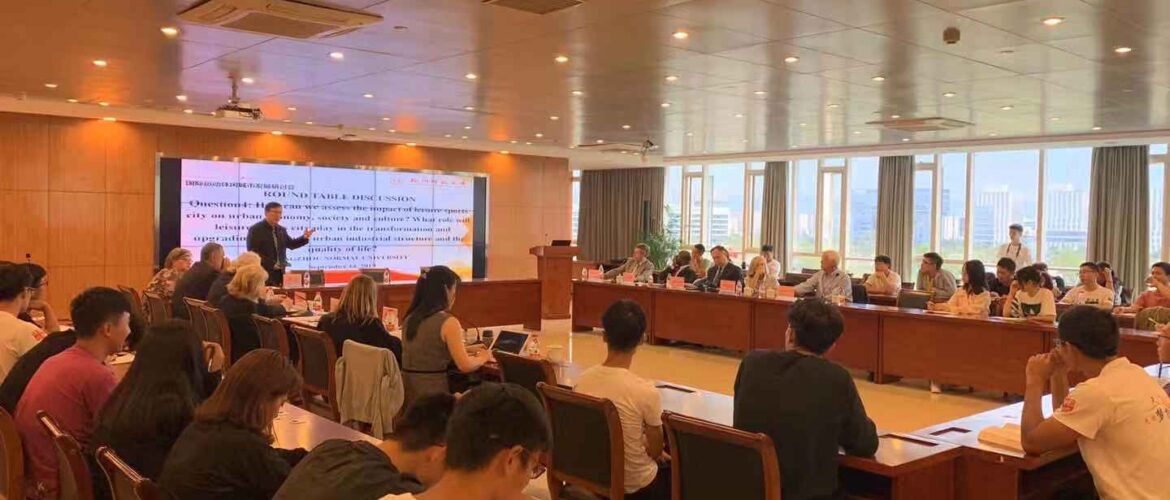The Seminar on Leisure Sports and Social Development held at Hangzhou Normal University, China, on the 14th October, started with a round table discussion around the potential development of a China Leisure Sports City Evaluation Index. Different questions were posed, such as the understanding of the concept “sports city”, how should leisure sports cities be created, or how to measure the impact of leisure sports cities in urban economy.
The discussion was followed by individual presentation on a diverse set of topics related to leisure and sports. Dr. Cristina Ortega, WLO Chief Operating Officer, presented the Culture and Creative Cities Monitor, an example developed recently in Europe, in the field of culture, which can provide inspiration to develop a sports index. Dr. Atara Sivan, from Hong Kong Baptist University, reflected on how leisure education (understood as leisure for, about and through leisure) can contribute to the development of skills outside the classroom – skills such as reflective thinking and creativity, or e-literacy. The following presenter, Dr. Stephen Anderson from East Carolina University, reviewed some common characteristics of happiness, as well as some ways to build social capital, as a means to become happier.
In her presentation, Dr. Bree A. Hayes, from the Hayes Group Consulting, pointed at leisure and exercise as the perfect antidote to stress. She argued that non-rigorous forms of leisure/exercises, such as walking in a museum or listen to a symphony, have multiple benefits, such as mood elevation, or sleep improvement in quality and quantity. Dr. Miklos Banhidi, from Széchenyi István, Hungary, delivered a presentation on festivals as a possible way to engage with the community for local development. Finally, Dr. Lawal Marafa, from The Chinese University of Hong Kong, focused on the dependence relation between sports and the environment, and mentioned some examples of efforts made to promote sustainability of sports – for instance, by converting sports areas into major ecological resources for cities, or by building facilitates and infrastructures that are environmentally friendly.





Leave a Comment